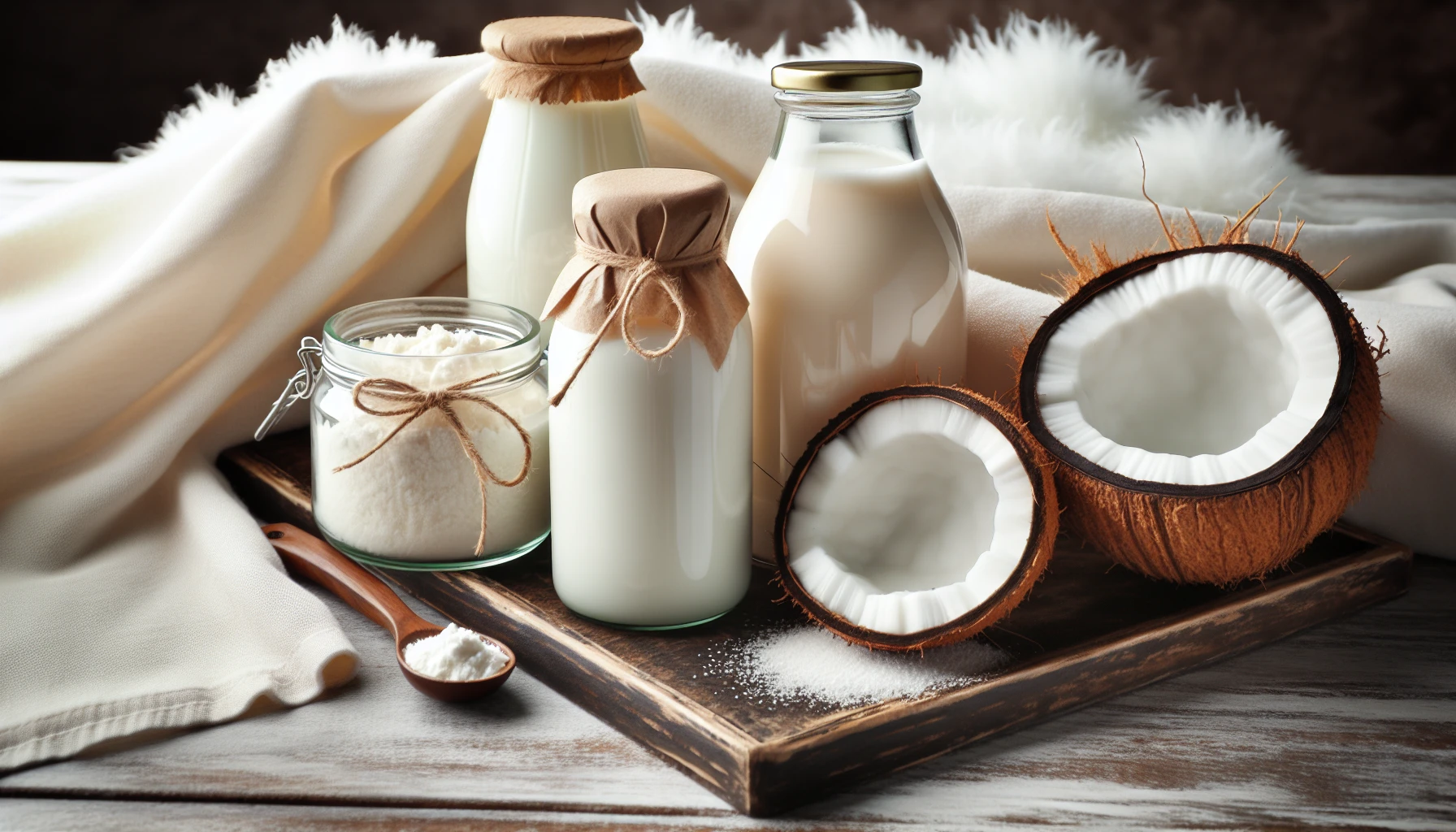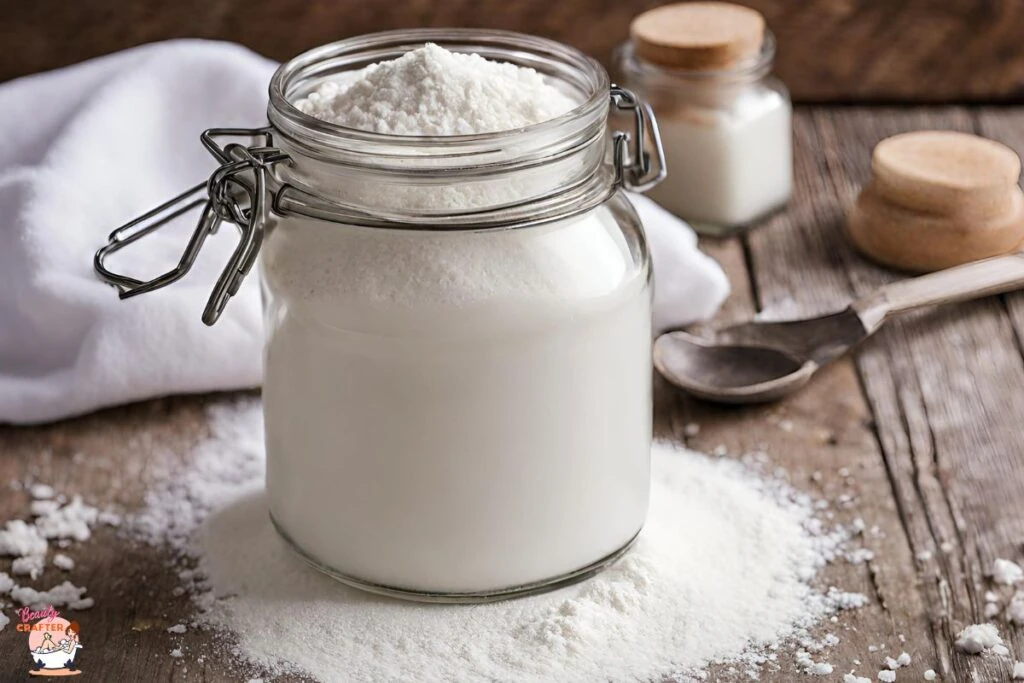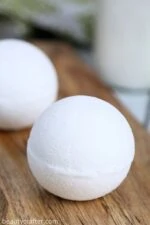Milk baths have been used for centuries to promote beautiful skin and relaxation. Imagine sinking into a warm, luxurious bath, enveloped in the soothing scent of essential oils while your skin is gently exfoliated and nourished. A homemade milk bath recipe requires simple ingredients and is very easy to create. The benefits of milk baths, how to create the perfect recipe, and some delightful additions to elevate your milk bath experience are all covered here.
From Cleopatra’s legendary beauty secret to modern-day self-care routines, milk baths have stood the test of time. Known for their skin-nourishing properties and relaxing effects, they offer a rejuvenating escape from everyday stress. Discover how to create this soothing, spa-like experience in the comfort of your own home.
Key Takeaways
- Milk baths provide a calming and nourishing experience, with lactic acid to exfoliate skin.
- Craft your own milk bath recipe for personalized self-care ritual with essential oils for relaxation or energy.
- Enjoy luxurious extras like flower petals and Epsom salt in your homemade milk bath or try alternative soothing options such as oatmeal baths.
The Benefits of Milk Baths

Milk baths benefits are numerous, making them a popular choice for self-care routines. A DIY milk bath can provide a gentle exfoliation and nourish your skin with a common natural ingredient. The lactic acid in milk gently dissolves dead skin cells, leaving skin looking and feeling more youthful and revitalized. Indulging in a milk infused bath once a week can maximize these benefits.
Lactic Acid Wonders
Lactic acid, which is naturally present in milk, can help to delicately remove dead skin cells, revealing softer, healthier skin. The lactic acid in milk provides gentle exfoliation without harsh scrubs or chemicals. Your skin will feel smooth, refreshed, and rejuvenated after each milk bath session.
Creating a soothing milk bath with lactic acid is an easy process, involving just a few ingredients and is well worth the small effort. It's a great choice for those with sensitive skin.
Skin-Nourishing Vitamins
Besides the exfoliating properties of lactic acid, milk baths provide numerous skin-nourishing and revitalizing vitamins and minerals. Essential vitamins and minerals that nourish and revitalize the skin can be found in full-fat dry milk.
Milk contains retinol (an antioxidant), vitamin D, and lactic acid, which can be beneficial for the skin, and powdered buttermilk is a great source of these nutrients. Vitamin A in milk bath soaks can be beneficial for skin health by aiding the production of healthy skin cells and stimulating tissue development.
How to Make a Milk Bath

Creating your own milk bath recipe is a delightful way to customize your self-care experience. Choosing the right milk and balancing the ingredients allows you to create a customized milk bath recipe for your preferences and skin needs.
We will guide you on how to select the right milk, including milk powder, for your milk bath recipe and provide advice on balancing other key ingredients like baking soda and cornstarch.
Choosing the Right Milk
Various kinds of milk, like whole, powdered, or coconut milk, work well for milk bath recipes.
Whole milk is generally considered the best option for a fresh milk bath, as it has enough fat to moisturize, but not so much as heavy cream which has a bit too much. Coconut milk or almond milk can also be used as non-dairy alternatives.
Powdered goat milk is my favorite choice for a milk bath, due to its natural compounds like alpha hydroxy acids, which help promote healthy skin cell turnover, and its moisturizing, exfoliating, soothing, and anti-aging properties. Dried milk it is easy to keep on hand and even premix for a convenient bath time. Coconut milk powder stands in well for those looking for a vegan option.
Balancing Act: Baking Soda and Cornstarch
Baking soda and cornstarch play crucial roles in creating a balanced milk bath recipe.
Baking soda in a milk bath can help keep dry skin hydrated by balancing pH levels and encouraging moisture retention. It also aids in relief from skin conditions like eczema, and skin fungus.
Cornstarch, on the other hand, imparts a soft and silky feel to the water, creating a luxurious and velvety sensation on the skin.
Combining these ingredients with your chosen milk creates a soothing and nourishing milk bath, leaving your skin soft and revitalized. For a balanced milk bath recipe, it is suggested to use a ratio of 2 parts baking soda to 1 part cornstarch.
Aromatherapy: Essential Oils for Your Milk Bath
Essential oils can greatly enhance the milk bath experience by providing aromatherapy benefits. These concentrated plant extracts can offer a range of effects, such as relaxation or energy-boosting properties. Incorporating essential oils into your milk bath enhances the indulgence and therapeutic experience.
Relaxing Scents
Adding soothing scents like chamomile, jasmine and lavender essential oil to your milk bath can provide a calming experience that helps you unwind after a long day. These essential oils offer various therapeutic benefits, such as promoting relaxation and better sleep.
Energizing Aromas
For those days when you need an energy boost, consider adding invigorating aromas like citrus or peppermint to your milk bath.
Citrus essential oils, such as lemon, orange, and grapefruit, have fragrances that can be invigorating and mood-enhancing while offering a revitalizing experience for your skin.
Peppermint essential oil can energize the body, while also relieving muscle tension, has antibacterial properties and helps open sinuses
Extra Touches: Luxurious Additions to Your Milk Bath Recipe

To elevate your milk bath experience even further, consider adding some luxurious extras like flower petals, oatmeal, or Epsom salt. These additions can enhance the calming atmosphere and provide additional skin benefits.
For instance, some ingredients you can add to your milk bath include:
- Rosewater: A lovely addition, with moisturizing and anti-aging benefits.
- Oatmeal: It can help reduce skin rashes, inflammation, and allergies, leaving the skin feeling silky soft and refreshed.
- Epsom salt or Dead sea salt: These salts can help you feel relaxed, ease inflammation, and nourish dry or irritated skin.
- Dried herbs and flowers: Look pretty in the bath and impart their own benefits. Lavender buds, chamomile flowers, rose petals and rosemary leaves are top choices.
These extra touches will transform your milk bath into a truly indulgent self-care experience.
Storing and Gifting Your Homemade Milk Bath

After crafting milk bath recipe with powdered milk, consider options for storage and gifting. Here are some suggestions:
- Store homemade Milk Bath in an airtight container for up to 3 months.
- Be sure to scoop it with clean hands or a scoop.
- Mason jars make excellent storage containers, allowing you to easily mix and store your milk bath.
Homemade milk baths are great as Christmas gifts. They also are nice choices for occasions like Mother’s Day or Teacher Appreciation.
Milk Bath Alternatives: Other Soothing Bath Options
If you wish to try other soothing bath options apart from milk baths, consider alternatives like:
- Bath salts offer a therapeutic experience by combining Epsom salts, pink Himalayan salt or sea salt with oils for your bath.
- Bath bombs are delightful balls of baking soda, citric acid, and essential oils that fizz and dissolve in the bath, releasing their calming properties. I even have some Milk Bath Bombs!
- Shower Steamers release a soothing blend of essential oils into the steam of your shower when the water hits them. See my homemade Shower Steamers recipe.
- Oatmeal baths soothe and nourish irritated the skin. See How to Make an Oatmeal Bath.
With these options, you can create a truly indulgent self-care routine tailored to your preferences.
Summary
In conclusion, milk baths offer a luxurious and soothing self-care experience that gently exfoliates, nourishes, and revitalizes the skin. With a variety of milks, essential oils, and luxurious additions to choose from, you can customize your milk bath recipe to create the perfect calming experience. Whether you’re seeking relaxation, energy-boosting benefits, or simply a moment of indulgence, milk baths provide an excellent option for self-care and rejuvenation.
We encourage you to explore the world of milk baths and experiment with different ingredients and aromas to find the perfect combination for your needs. Your skin will thank you, and you’ll enjoy a rejuvenating experience that leaves you feeling refreshed and revitalized.

Frequently Asked Questions
How do I make a milk bath?
To make a fresh milk bath, simply add 1 to 2 cups of milk to warm bathwater. You can also include optional ingredients like essential oils, bath salts, honey, or baking soda for additional benefits. Stir the water and milk with your arm or foot to combine, and enjoy a luxurious soak!
What kind of milk is used for milk baths?
For a luxurious milk bath, cow's milk is the most popular choice due to its common availability and full-fat texture. Goat's milk can also be used to help soothe and soften your skin. Powdered milks are also a convenient choice.
How long does milk bath last?
A fresh milk bath can last up to 30 minutes, perfect for relaxation and providing additional benefits such as adding essential oils, bath salts, honey, or baking soda. Enjoy 20 to 30 minutes of a warm soak in a milk bath.
How often should I take a milk bath for optimal benefits?
Take a milk bath once a week for optimal benefits and maximum relaxation.

Powdered Milk Bath
Ingredients
- 1 cup powdered milk*
- ¼ cup baking soda
- 2 tablespoons cornstarch
- Optional: 10 drops of your favorite essential oil
Instructions
- Start by combining the powdered milk, baking soda, and cornstarch in a bowl. Mix together until all of the ingredients are evenly distributed.
- If you’d like, add 10 drops of your favorite essential oil to the mix for more fragrant bath water and the benefits of the selected oils.
- Once all of the ingredients are combined, transfer them into a jar or container with a lid. This will make it easier to store and use for future baths.
- When ready to use, fill your tub with warm water and sprinkle the powdered milk mixture into the running water. Swirl it around with your hand to help it disperse evenly.
- Soak in the tub for 15-20 minutes and enjoy the soft, silky feel of your skin afterwards!





















Leave a Reply